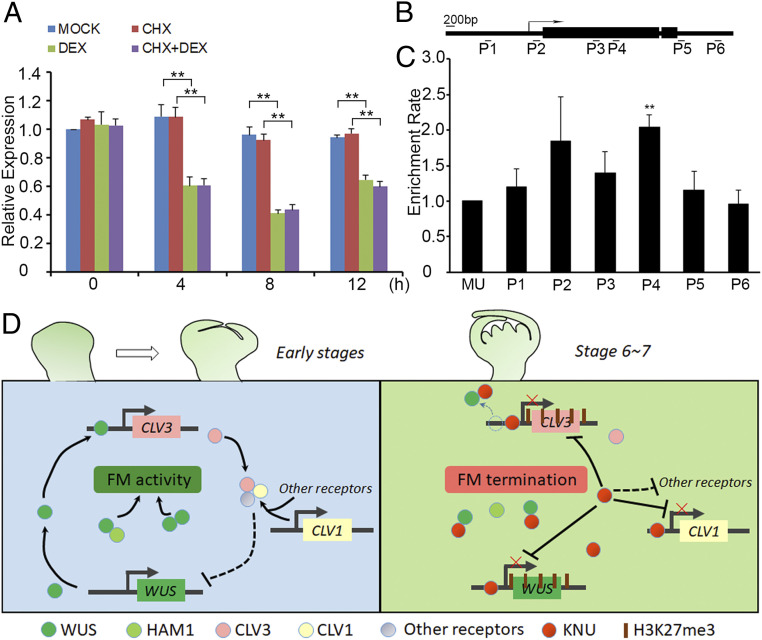Fig. 7.
CLV1 is directly repressed by KNU and the regulatory framework mediated by KNU for FM determinacy. (A–C) KNU directly represses CLV1. (A) CLV1 expression in ap1 cal 35S:KNU-GR-myc after a single DEX treatment, CHX treatment, and DEX + CHX treatment. CLV1 transcript levels were quantified by qPCR. The Tip41-like served as the internal control. The error bars represent SD of three biological replicates. The asterisks indicate significant differences between samples treated with different chemicals (**P < 0.01, Student’s t test). (B) The Schematic diagram of CLV1 locus and primer sets P1 to P6 used for ChIP assays. (C) ChIP assay using ap1 cal 35S:KNU-GR-myc inflorescences. Nuclear proteins were immunoprecipitated with anti–c-Myc agarose beads, and the enriched DNA was used for qPCR assays. The y-axis shows relative enrichment compared with no antibody (negative control). MU served as a negative control locus, and the values of MU were calibrated to 1. The error bars represent SD of three biological replicates. The asterisks indicate significant differences between MU and different primer sets on CLV1 (**P < 0.01, Student’s t test). (D) Model for FM determinacy mediated by KNU in a comprehensive manner. Floral stem cell homeostasis is maintained by the CLV-WUS feedback loop at early stages (before stage 6) in the FM. At early stages, both WUS–WUS homodimers and WUS–HAM1 heterodimers are essential for the activity of the FM. At floral stages 6 and 7, KNU promotes the control of FM activity in multiple ways. First, KNU directly binds to CLV3 promoter and mediates the deposition of repressive mark H3K27me3; meanwhile, KNU inhibits WUS binding to CLV3 by KNU–WUS interaction. Second, both WUS–WUS and WUS–HAM1 interactions are interrupted by KNU. Third, KNU represses CLV1 and other CLV-like receptors as well as several CLEs.

